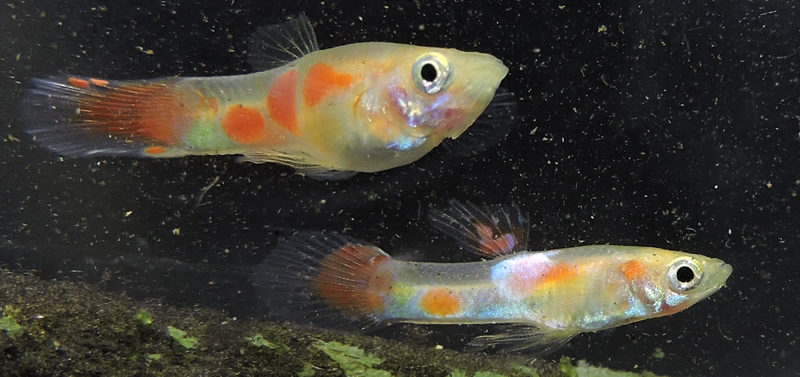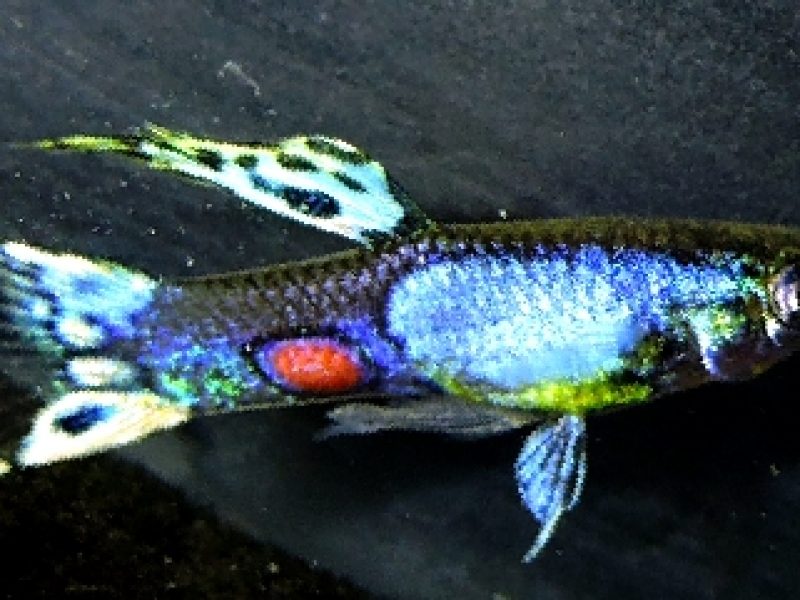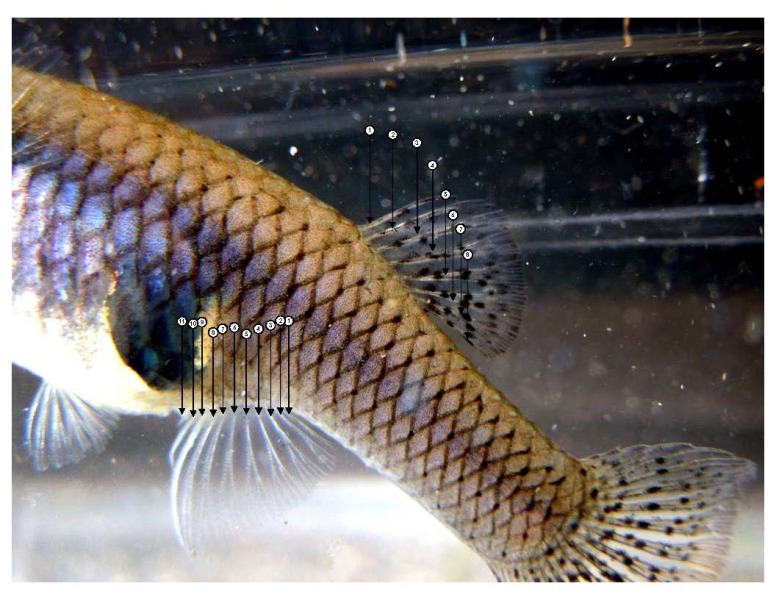Rio Abre ‘Gold’ Guppies








Endless Endlers, Round Tail Guppies, Scuds, Live Plants, Naja and More!!!
Topics Regarding Livefins Guppies
Rio Abre ‘Gold’ Guppies






A Very nice clean True Breeding line of Italian Japan Blue Doublesword Guppies recently added to the collection!


Steel Nebula Guppies – A Beautiful Tri-Color Mosaic Snakeskin Hybrid Line originally developed by Pete Mang, AKA the seller Lotsoffish on the Aquabid Live Aquaria Auction website.



This strain was found in Kanal de Laguna de Los Platos. And brought to the German collector Dr. Wolfgang Staeck resident in Berlin back in 2004 which this strain was named after. And Dr. Fred Poser (Institute of zoology and taxonomy, Amsterdam) identified and classified this strain. In general Staeck Endlers are as hardy as any other Endler, maybe more so! They’re an attractive fish when it comes to their bold outlined spotted pattern which has a high-tech almost mechanical look. The group that I have came from a very good friend of mine in Germany who shares the same interest when it comes to wild endlers.

Staeck Endlers at Livefins Aquatics USA
Staeck Endlers at Livefins Aquatics USA 

Lazuli Guppies with Magenta gene at Livefins Aquatics
Lazuli Guppies with Magenta gene at Livefins Aquatics
Lazuli Guppies with Magenta gene at Livefins Aquatics
Lazuli Guppies with Magenta gene at Livefins Aquatics Lazuli Guppies with Magenta gene at Livefins Aquatics
Lazuli Guppies with Magenta gene at Livefins Aquatics 


In this case, in order to be able to identify which of your Female Livebearers is the female Ginga Sulphureus, you’ll need to count the number of Anal Fin rays and compare them with a known female of the type of Endler or Guppy you presume the fish may be and a Ginga sulphureus female. Unfortunately I do not know the counts on these off the top of my head, but I believe they are different especially if you are dealing with an N Class Pure Endler as compared with a mostly guppy genetic line such as the Ginga sulphureus… That’s what I’d do to identify the fish in question. If they are the same then compare the dorsal fin ray counts as well.

Hi Jeff,
Sorry to hear they haven’t been as prolific as you’d like. You could be right, It may be your water conditions. Do you have any live plants in with them? What temperature are you maintaining? Have you tried cycling the water temperature? How much light is your tank receiving and have you tried varying the day length? What other fish are inhabiting the tank? I recommend you try to get you aquarium environment as similar as possible to the conditions these are born, bred and raised in as they are extremely prolific in the conditions / parameters around here. They are kept alone. All of my fish have been raised in Florida Aquifer fed well water which has a pH of 7.6 and conductivity of 290. They are born bred and raised in 55 gallon heavily planted aquariums all have substrate. I feed them a large variety of food. I feed them fish pearls larval diet, occasional freeze dried and frozen bloodworms, algae, live scuds, live and freeze dried daphnia, live ghost shrimp larvae, freeze dried Cyclops, mosquito larvae and fresh hatched brine shrimp. Most of these dry foods are available from www.kensfish.com. The live foods are cultured among the fish within the aquariums. I do not want to make this seem overcomplicated though, they are easy to care for. They are fed this large variety of feeds and are exposed to natural sunlight to bring out their best coloration and to maintain long term health.
They will thrive on just Tetramin or Ocean Nutrition flake food in a heavily planted aquarium with a ph above 7. The temperature in the greenhouse where they have been raised varies seasonally as they are in aquariums within the greenhouse. During the winter the water temperature will average 72 (64 in morning / 84 late afternoon) and during the summer 82 (72 in morning / 88 late afternoon). The variance is a natural occurrence these fish are well adapted to since they were originally collected from small ponds in hot climates.
They grow faster and breed more often in the warmer temperatures. They tend to drop fry the day before a full moon as well as the first day of the waxing moon. You may want to try using moonlight to try and trigger them to drop. Another trigger is to not change the water for 10-days prior to the optimal lunar cycle days and then perform a water change on either of those days. Hope this helps.
Thanks,
Mitchell
As far as the Ender’s producing more females, I can only guess. Are you sure they are mature enough to be certain of the gender, are they gravid? Gender is genetically determined. I think that if there are excellent conditions in your aquarium, possibly pheromones are being released that cause you to get more females to build the population of a colony in order to dominate. I’ve noticed when only 2 fry are produced often they are 1 male and 1 female. The release of pheromones may have something to do with survival of a species as well as affect the fertility of male sperm. I’ve seen this with Livebearers as well as mouth brooding cichlids. I’ve read that a higher pH will yield more females. I’ve read that higher temps can reduce the survival rate of male sperm. There is a lot of anecdotal information out there. Just go with your observations. If you’d like to change the gender ratio then you’ll need to do something different with hardness, pH, temperature, lighting intensity as well as duration.
The F1’s RREA Snakeskins are prolific now. The F0 parents took almost 3 months until they had Fry. The F1’s are having fry since they were about 3 months old and do not eat their fry.
The original fish I bought from Mokkom and Topshowguppy on Aquabid and the RREA Tuxedo’s were by luck.
Currently, I maintain 3 different lines of them.
Line 1: RREA Snakeskin X RREA Solid Red IFGA Standard
Line 2: RREA Snakeskin X RREA Snakeskin (All Asian)
Line 3: RREA Snakeskin X RREA Red Head Tuxedo (Red Head / Tux Green Body / Red Tail)

Lines 1 and 2 throw similar looking progeny except Line 1 will throw about 10% solids.
Line 3 Just had their first batch, so I’m anxious to see what they will look like.


The Ginga Rubras will crossbreed with the Japanese Blue Endlers, that will be an interesting cross. I haven’t made that cross, but both lines have strong autosomal traits (non-gender based) and should be a stable and healthy line. I keep them at 82, which I’d consider optimal but they will tolerate 55 – 92 degrees. They do very well on a quality flake food, I add AP larval diet, freeze dried bloodworms, freeze dried Cyclops, live mosquito larvae, daphnia, scuds, occasional newly hatched brine shrimp and algae. They will feed on algae and even thread algae on plants and so I allow it to grow on 3 sides of their tanks for the biological value. I enjoy endlers and endler hybrid guppies because they tend to not always be on the surface behaving more like wild livebearers rather than like delta tail guppies. Please send a photo of the blue/gingas when they color up, they should be beautiful, stay in touch.
Thank you for your inquiry. I agree there are many who think it is ok to manipulate the color of a fish. I do not. I take all photos in sunlight without a flash, I think this brings out the true color of a fish at its best. I do clean up the backgrounds from any distractions such as bubbles on the glass or blurred fish though to highlight and focus on the beauty of the particular fish in my listings. I raise my fish in a greenhouse within aquariums and that gives a boost to the chromatophores since the fish have been raised exposed to natural sunlight, I use no supplemental artificial light of any kind. They also receive live food in addition to a wide variety of flake and freeze dried foods every day of their lives while being raised along with green water, live plants, snails, scuds, daphnia and Cyclops. I believe the results are noticeable. These particular guppies also have a great lineage featuring deep coloration with outstanding finnage. So for these reasons I think they are better than average ifga moscows. Please feel free to call or email any additional questions or comments.
I raise these particular fish in a greenhouse in a 55 gallon breeder tank with some endlers and the water stays quite warm. 82 – 86 degrees this time of year. The pH is 7.6, source is unfiltered Florida well water which filters though a limerock aquifer, kH is quite high. The TDS measures 390. I raise plants with them, so the tank has Florida sandy soil as substrate and is heavily planted along with scuds, daphnia and cyclops cultured within same tank. This lessens aggression between males. I would not recommend placing all 3 of these in a bare tank or without females and lots of retreat area for the sub dominant males.